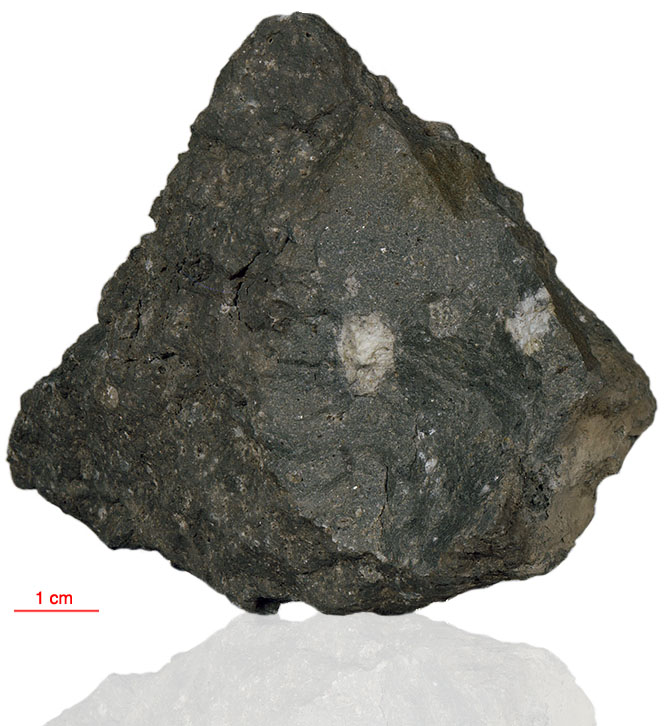
Fact sheet
76295 is a non-vesicular, crystalline matrix breccia with a blue grey colour (similar to 76275). Light and dark clasts have a distinct outline with the matrix. It is a fine sub-ophitic impact melt. The blue-grey breccia matrix contains bands and swirls of minor (~10%) tan matrix breccia and partially dissolved mineral and rock clasts. The mode is about 50% plagioclase and 40% pyroxene with minor ilmenite, olivine and other accessory minerals (zircon, metallic iron, troilite). Rotation 1 shows a large basaltic clast containing sieve-textured plagioclase feldspar. Rotation 2 shows a chondrule-like clast of microbreccia.
The sample weighed 260.7 grams before analysis and has been dated at 3.94±0.04 billion years.
Further details of this and other Apollo samples are here: http://curator.jsc.nasa.gov/lunar/
Apollo 17, the final manned landing mission, had two objectives: to obtain samples of ancient rocks from the lunar highlands and to look for evidence of younger volcanic activity on the valley floor.
This small Collection contains material deriving from both periods, including igneous rocks around 4.3 billion years old from the lunar highlands as well as younger volcanic samples dating from about 3.6 billion years ago.
Apollo 17 was launched on 7 December 1972.






